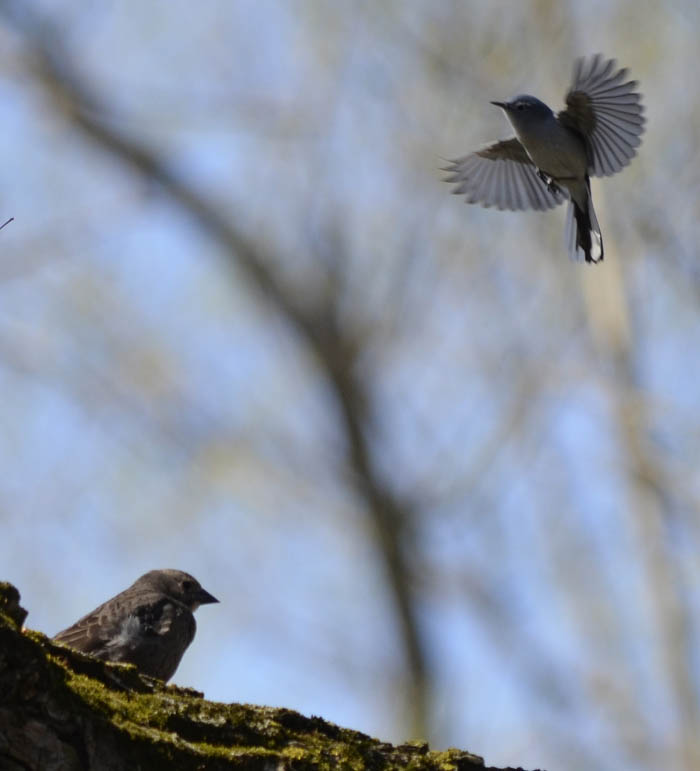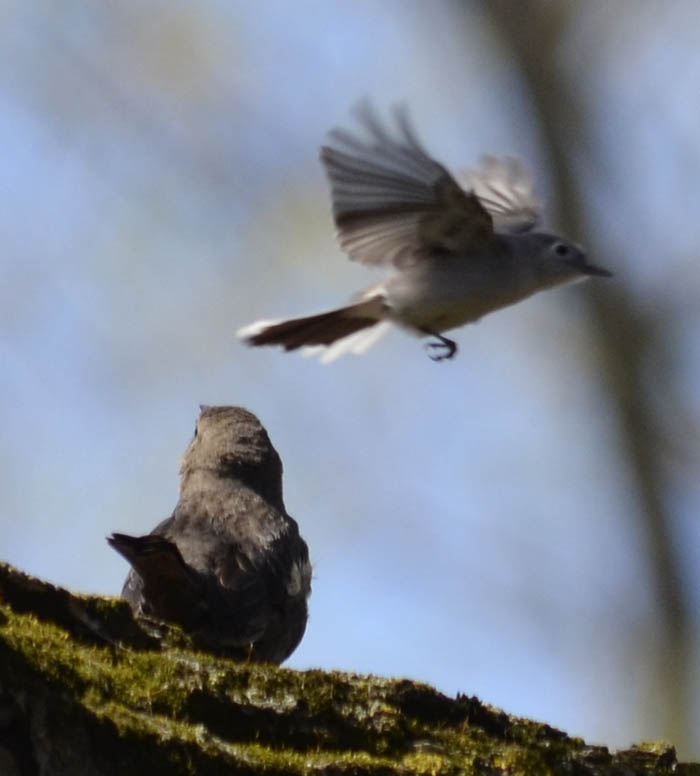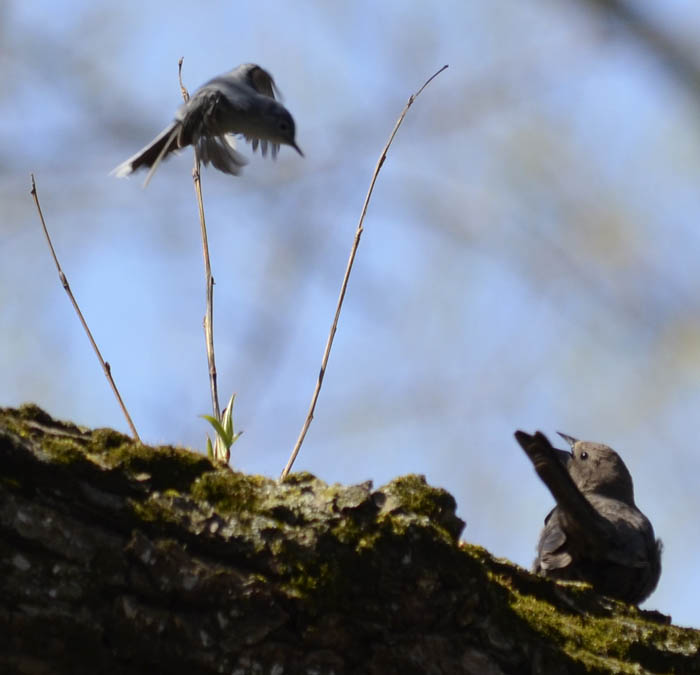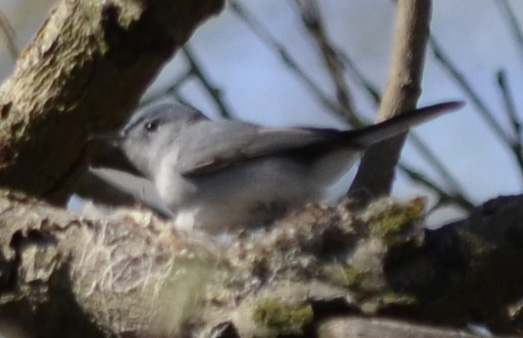Today while standing among the rampant garlic mustard under some old and gnarled trees in Lakeside Park, Mississauga, I watched an action thriller. Two tiny Blue-grey Gnatcatchers were aggressively dive bombing a bird at least twice their size as it sat on a wide sturdy branch. What drove them to do this?
Blue-Grey Gnatcatchers Protect Their Future
Neither Gnatcatcher actually hit, kicked or bit at the larger bird. Both would swoop down, flying very fast, but would veer away a few inches before colliding. I’m sure the larger bird could feel the puff of wind from their wings with each swoosh.
When I looked more closely at the big bird, I found very few field marks. It had no eye lines, stripes or rings. It had no wing bars. It had no splashes of colour. In all it was a drab brown-grey bird. The bill was short and thick fairly similar to a finch’s bill. The bill was also dark.
Eventually, as if more exhausted by the attack than the birds that had actually been doing all of the flying, the big bird flew away. Exultant the smaller birds chased it a bit further, then returned to their original tree.
When I pulled out my trusty Peterson’s Field Guide, I found that bird was likely a female Cowbird. A quick check with the more experienced birders at Outdoor Ontario confirmed this idea.
As many of you know, female Cowbirds usually lay their eggs in other birds’ nests. If the egg is not detected, the nest owners usually end up raising the Cowbird either in addition to or instead of their own chicks. Unfortunately Cowbird eggs hatch quickly and their young grow quickly. They are also aggressive and have been known to out compete their nest mates for food and even to push other nestlings out of the nest to their deaths.
I don’t know whether these little Gnatcatchers actually recognized the Cowbird as the kind of bird that foists these dangerous eggs off on them or not. Some small birds seem to chase all larger birds away from their nest sites. That’s not a bad idea because many larger birds will eat eggs and chicks if they can get them. Regardless of why they did their dive bombing, these Gnatcatchers had the right idea.
Because I think they are starting a nest in the tree next door. According to the Cornell University website, they build a nest with lichens on the outside. I watched them returning repeatedly to this same one spot. If the leaves don’t grow in and block the view, I hope to return later this week and see if they are still there. If so, I think I’ll know where their nest is.
Related Reading
Join In
Have you seen small birds desperately trying to meet the hungry demands of a cowbird chick? Have you ever felt like interfering and removing it from the nest? Please share your experiences with a comment.




